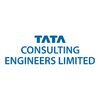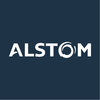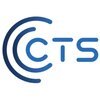Filter interviews by
Bader Al Mulla & Brothers Co. Plumbing Foreman Interview Questions and Answers
Bader Al Mulla & Brothers Co. Plumbing Foreman Interview Experiences
1 interview found
I applied via Company Website and was interviewed in Jan 2022. There was 1 interview round.
(1 Question)
- Q1. Why should we hire you?
Interview Preparation Tips
- Plumbing
- Operations
Please forward to you that we are geting job
Thanks
Top trending discussions






Interview questions from similar companies

I applied via Referral and was interviewed before May 2020. There was 1 interview round.
Interview Questionnaire
3 Questions
- Q1. How to do Rate analysis ?
- Ans.
Rate analysis is the process of determining the unit cost of a particular item or activity in a construction project.
Identify the item or activity to be analyzed
Determine the quantity of materials and labor required
Calculate the cost of materials and labor
Add overhead costs and profit margin
Divide the total cost by the quantity to get the unit rate
Compare the rate with market rates to ensure competitiveness
- Q2. What are the components to be considered in the Rate analysis?
- Ans.
Components to be considered in Rate analysis
Cost of materials
Cost of labor
Cost of equipment
Overhead expenses
Profit margin
Taxes and duties
Transportation costs
Wastage and spoilage
Contingencies
Productivity rates
Market rates
Inflation rates
- Q3. Documents required to certify Final bill
- Ans.
The documents required to certify the final bill as a Quantity Surveyor.
Contract documents
Measurement records
Variation orders
Payment certificates
Final account statement
As-built drawings
Completion certificates
Test reports
Subcontractor invoices
Material invoices
Interview Preparation Tips

Engineer Interview Questions & Answers
Megha Engineering & Infrastructuresposted on 3 Feb 2022
I applied via Walk-in and was interviewed before Feb 2021. There were 2 interview rounds.

(4 Questions)
- Q1. What are the common welding process?
- Ans.
Common welding processes include MIG, TIG, Stick, and Flux-Cored welding.
MIG (Metal Inert Gas) welding uses a wire electrode and shielding gas to join metal.
TIG (Tungsten Inert Gas) welding uses a tungsten electrode and filler metal to join metal.
Stick welding uses a consumable electrode coated in flux to join metal.
Flux-Cored welding uses a wire electrode with a flux core to join metal.
Other common welding processes i...
- Q2. What are the tests conducted on welding joints?
- Ans.
Tests conducted on welding joints
Visual inspection
Dye penetrant testing
Radiographic testing
Ultrasonic testing
Magnetic particle testing
Tensile testing
Bend testing
- Q3. What is submerged arc welding process?
- Ans.
Submerged arc welding is a process where an arc is maintained between a consumable electrode and the workpiece under a blanket of granular flux.
The process is used for welding thick sections of steel.
The granular flux shields the weld from atmospheric contamination.
The consumable electrode is continuously fed into the weld pool.
The process is commonly used in shipbuilding, pipeline construction, and pressure vessel fab
- Q4. Procedure of rectification for defected welding joints?
- Ans.
Defected welding joints can be rectified through a process of cutting, grinding, and rewelding.
Identify the type and extent of the defect
Cut out the defected portion of the joint
Grind the edges of the remaining joint to prepare for rewelding
Reweld the joint using appropriate welding techniques and materials
Perform non-destructive testing to ensure the quality of the repaired joint
Interview Preparation Tips

Interview Questionnaire
9 Questions
- Q1. What is rolling margin
- Ans.
Rolling margin is a financial term that refers to the difference between the revenue generated and the variable costs incurred over a specific period of time.
Rolling margin is used to measure the profitability of a business or project.
It helps in assessing the efficiency of operations and identifying areas for cost reduction.
The formula for calculating rolling margin is: (Revenue - Variable Costs) / Revenue * 100.
For e...
- Q2. What will you do if the site qty differ from Drawing qty
- Ans.
If the site quantity differs from the drawing quantity, I will take the following steps to address the issue.
I will review the drawings and specifications to ensure accuracy.
I will communicate with the project team, including the architect and engineer, to clarify any discrepancies.
I will conduct a site visit to physically verify the quantities and compare them with the drawings.
If there are significant differences, I ...
- Q3. Tell me about ur self
- Q4. What is reconciliation of steel
- Ans.
Reconciliation of steel involves comparing the actual quantity of steel used in a construction project with the estimated quantity.
Reconciliation of steel is a process used in construction projects to ensure that the actual quantity of steel used matches the estimated quantity.
It involves comparing the quantity of steel recorded in the project's documentation, such as drawings and specifications, with the quantity of s...
- Q5. What is the procedure for BBS
- Ans.
BBS stands for Bar Bending Schedule, which is a detailed list of reinforcement bars in a concrete element.
BBS is prepared based on the structural drawings and specifications.
It includes the diameter, length, shape, and number of reinforcement bars required for the element.
BBS helps in estimating the quantity of steel required and also ensures the correct placement of reinforcement bars.
It is an essential document for t...
- Q6. How you do the rate analysis
- Ans.
Rate analysis is done by breaking down the cost of each item in a construction project to determine the overall cost.
Rate analysis involves breaking down the cost of each item in a construction project.
The cost of materials, labor, and equipment is analyzed to determine the overall cost.
Quantities of each item are measured and multiplied by their respective rates to calculate the cost.
Rate analysis helps in estimating ...
- Q7. What is margin for OH & Profits in Rate analysis
- Ans.
Margin for OH & Profits in rate analysis is the additional amount added to cover overhead costs and generate profit.
Margin for OH & Profits is added to the direct cost of a project to cover indirect costs and generate profit.
It is usually expressed as a percentage of the direct cost.
The margin for OH & Profits varies depending on the nature of the project and market conditions.
For example, if the direct cost of a proje...
- Q8. Wastage % for Reinforcement Steel
- Ans.
The wastage percentage for reinforcement steel varies depending on factors such as project complexity and workmanship.
Wastage percentage for reinforcement steel is typically estimated between 2-5%.
Factors such as project complexity, workmanship, and site conditions can affect the wastage percentage.
Proper planning, accurate cutting, and careful handling can help minimize wastage.
Examples of wastage include incorrect cu...
- Q9. Code for Structural steel and reinforced steel
- Ans.
The code for structural steel is typically governed by the American Institute of Steel Construction (AISC) while reinforced steel is governed by the American Concrete Institute (ACI).
Structural steel is commonly used in the construction of buildings, bridges, and other structures.
The AISC provides standards and guidelines for the design, fabrication, and erection of structural steel.
Reinforced steel, also known as reba...

I applied via Walk-in and was interviewed before Apr 2021. There were 3 interview rounds.
(2 Questions)
- Q1. Tell me about yourself.
- Q2. Asked me my work experience and my education.
(1 Question)
- Q1. About My work experince and my education and my knowledge.
(2 Questions)
- Q1. About my work experience and my education and my knowledge.
- Q2. My Interoduction and my
Interview Preparation Tips

Site Engineer Interview Questions & Answers
Shapoorji Pallonji Groupposted on 20 Jul 2017
Interview Questionnaire
1 Question
- Q1. He just asked how much will you take?
Interview Preparation Tips
Experience: Nothing much, they are all concerned about money.
Tips: Just tell them as per company standard.

Interview Questionnaire
1 Question
- Q1. Questions were from bending moment and shear force diagrams;
Interview Preparation Tips
Experience: Technical (Structural engineering questions only) and aptitude test
Round: Technical Interview
Tips: Questions on Earthquake engineering, structural dynamics,Design of RC and steel structures can also be asked.
Round: HR Interview
Experience: HR interview is trivial if you are selected through technical interview.
General Tips: Technical/aptitude test and technical interview had maximum weightage. If you crack it the best way, you are in!
Skill Tips: CGPA does not help much. Internship, project etc. questions were not asked.
Skills: Aptitude skills, Technical skills, Designing skills
College Name: IIT MADRAS

I applied via Walk-in and was interviewed before Nov 2019. There were 3 interview rounds.
Interview Questionnaire
2 Questions
- Q1. Tower cranes erection,batching plant maintenance and electrical safety
- Q2. Ok normal
Interview Preparation Tips

Junior Engineer Interview Questions & Answers
Shapoorji Pallonji Groupposted on 28 Aug 2021
I applied via Walk-in and was interviewed before Aug 2020. There was 1 interview round.
Interview Questionnaire
2 Questions
- Q1. They asked to me my regarding College project which is I submitted in last semester
- Q2. In my project related answer (induction motor)
Interview Preparation Tips

Engineer Interview Questions & Answers
Megha Engineering & Infrastructuresposted on 16 Aug 2020
I applied via Walk-in and was interviewed before Aug 2019. There were 3 interview rounds.
Interview Questionnaire
4 Questions
- Q1. Tell daily maintenance schedules of machineries
- Ans.
Daily maintenance schedules of machineries
Check oil levels and top up if necessary
Inspect and clean filters
Check for any signs of wear and tear
Lubricate moving parts
Check for any leaks or unusual noises
Perform any necessary repairs or replacements
Keep a record of maintenance performed
- Q2. Tell how many types of oils uses in construction machinery
- Ans.
Construction machinery uses various types of oils depending on their functions.
There are different types of oils used in construction machinery such as engine oil, hydraulic oil, gear oil, transmission oil, and brake oil.
Engine oil is used to lubricate the engine and prevent wear and tear.
Hydraulic oil is used to transfer power in hydraulic systems.
Gear oil is used to lubricate gears and bearings in gearboxes.
Transmiss...
- Q3. How to repair hydraulic pump?
- Ans.
To repair a hydraulic pump, first identify the problem and then disassemble the pump to replace or repair the faulty parts.
Identify the problem by checking for leaks, unusual noises, or loss of pressure.
Disassemble the pump carefully, taking note of the order of parts and any seals or gaskets.
Inspect the parts for damage or wear, and replace any faulty components.
Reassemble the pump, making sure all parts are properly ...
- Q4. What is the reason of engine failure ?
- Ans.
Engine failure can be caused by various factors such as overheating, lack of maintenance, wear and tear, and manufacturing defects.
Overheating due to lack of coolant or oil
Lack of maintenance such as not changing oil or air filters
Wear and tear of engine components such as pistons, bearings, and valves
Manufacturing defects such as faulty parts or poor assembly
Fuel contamination or incorrect fuel usage
Improper installat...
Interview Preparation Tips
Bader Al Mulla & Brothers Co. Interview FAQs
Tell us how to improve this page.
Bader Al Mulla & Brothers Co. Interviews By Designations
- Bader Al Mulla & Brothers Co. Electrical Technician Interview Questions
- Bader Al Mulla & Brothers Co. Project Coordinator Interview Questions
- Bader Al Mulla & Brothers Co. System Manager Interview Questions
- Bader Al Mulla & Brothers Co. Plumbing Foreman Interview Questions
- Bader Al Mulla & Brothers Co. Instrumentation Supervisor Interview Questions
Interview Questions for Popular Designations
- Plumbing Supervisor Interview Questions
- Plumbing Engineer Interview Questions
- Plumber Interview Questions
- Electrical Engineer Interview Questions
- QA QC Engineer Interview Questions
- Senior Plumber Interview Questions
- Maintenance Plumber Interview Questions
- Electrical Supervisor Interview Questions
- Show more
Interview Questions from Similar Companies
|
Safety Officer
5
salaries
| ₹4.5 L/yr - ₹7.5 L/yr |
|
CNC Machine Operator
5
salaries
| ₹6 L/yr - ₹8.4 L/yr |
|
Instrument Engineer
4
salaries
| ₹6 L/yr - ₹25 L/yr |
|
Electrician
4
salaries
| ₹2.4 L/yr - ₹6 L/yr |
|
Instrumentation Technician
4
salaries
| ₹6 L/yr - ₹12 L/yr |

Megha Engineering & Infrastructures

Shapoorji Pallonji Group

Alstom Transportation

Tata Technologies
- Home >
- Interviews >
- Bader Al Mulla & Brothers Co. Interview Questions >
- Bader Al Mulla & Brothers Co. Plumbing Foreman Interview Questions









